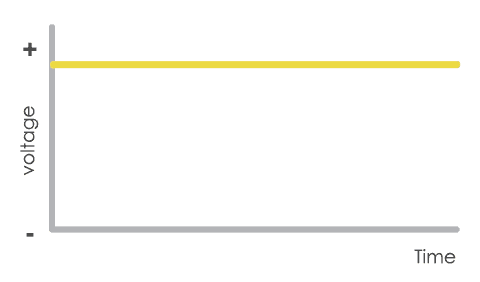Types of current and their applications
Electric current is the amount of electric charges that
passes through a wire with respect to time. When battery is connected across a
conductor, electrons move from negative terminal to positive terminal of
battery. They move with very high velocity (more than the speed of light) and
thus produce some amount of heat energy. Due to this, light bulbs glow.
Electric current is of two types: Alternating current (AC)
and direct current (DC). The difference is that direct current flows in one
direction while alternating current changes its direction rapidly. Both AC and
DC have their own specific uses but AC is more common type of current that we
use today at home, offices, etc.
Nikola Tesla and Thomas Edison invented AC and DC
respectively. They battled over the standardization of the current notation.
After all AC won the battle when it powered France Fair and finally it came
into existence.
Alternating current:
An electric current is current that reverses its direction
many times a second at regular intervals. It is typically used in power
supplies. Number of times the current changes its direction in one second can
be defined as the frequency of AC. 50Hz. frequency means it changes 50 times in
a second. Frequency in USA is 60Hz. while in India it is 50Hz.
AC is generated by devices called alternators. The
alternator is a machine that converts mechanical energy into alternating
current. It works on the principle of Faraday’s law of electromagnetic
induction. Here mechanical sources of mechanical energy include steam turbines,
internal combustion engines, and water turbines. Today generator provides
nearly all of the power for electric power grids.
AC waveform:
AC can be represented by many waveforms like triangular
wave, square wave but most common representative is sine wave. It is
represented by amplitude and time. Amplitude is the peak value of current.
Applications of AC:
AC is widely used in industries of transportation and
production of electricity. Almost every house is powered by AC. AC is also used
to power electric motors. DC is not used to power houses due to high risk of
cost, and converting voltages.
Advantages of AC:
1. AC is easy to generate than DC.
2. It is cheaper.
3. The loss of energy during transmission is negligible.
4. AC can be easily converted to DC.
5. It is easy to transmit AC.
6. In AC, resistance is greater than DC.
Disadvantages of AC:
1. At high voltage it is dangerous to work with AC as shock
of AC is attractive but shock of DC is repulsive in nature.
2. AC is not efficient and needs power factor management for
efficiency.
3. Most of the gadgets do not run directly on AC.
Direct current:
Direct current refers to electric charges flowing in one
direction. This type of current is most commonly produced by batteries.
DC waveform:
DC circuits have unidirectional flow of current and like AC
it is not changing the direction periodically.
Waveform of DC is pure sine wave.
Applications of DC:
DC power is widespread in low voltage applications such as
charging batteries, automotive applications, and aircraft applications and in
almost all electronic gadgets like mobile phone, music players, etc.
Conversion of AC into
DC:
We get DC from the following things:
1. Batteries, in which chemical reactions happen and then
this chemical energy is converted into electrical energy.
2. AC to DC conversion via rectifier. Rectifier is an
electronic circuit which converts AC into DC. These rectifiers can be seen in
our mobile chargers, battery eliminators, etc. Most of the gadgets are powered
or charged indirectly by AC and then this AC is converted to DC.
AC and DC sources:
Alternating current and Direct current source can be denoted
by these symbols.
The direction of current changes at regular interval of time
in AC source while in DC source change in direction is constant. You can see
the difference in the figure below:
Advantages of DC:
1. It is able to power most electronic gadgets.
2. It is easy to store DC.
3. DC is less dangerous than AC because chock of DC is
repulsive.
Disadvantages of DC:
1. It is costlier to produce.
2. It is difficult to transport.
3. It is difficult to generate DC as compared to AC.
AC vs. DC
Thomas Edison proposed a network of power plants which
produced DC power and they could power houses nearer to 1 mile from that power
plant. DC is very difficult to transport from one place to another. So Tesla
came up with AC power but Edison considered this type of current as extremely
dangerous. Westinghouse then worked on power distribution system using Tesla’s
patents. AC can be easily transported from one place to another using
transformer. This can power to houses many miles away from power houses and
thus can reach to more number of people. AC finally came into existence when it
powered France Fair successfully.
Difference between AC
and DC
The main difference between AC and DC is their directions.
AC changes its direction in regular interval of time while DC is unidirectional
flow. Due to many advantages of AC, it used to power our houses and offices
while DC is used to power low power devices. AC is easier to transform between voltage levels,
which makes high-voltage transmission more feasible. DC, on the other hand, is
found in almost all electronics.
Summary
Thus, AC and DC are two types of electric current. Both have
their own uses, advantages and disadvantages. AC is more widely used to power
buildings and offices while DC is more widely used to power electronic gadgets.
Our lifestyle is dependent on both of them.



Comments
Post a Comment